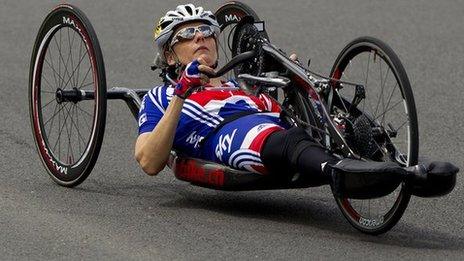Rio Paralympics 2016: An A-Z of Paralympic sport classifications
- Published
The 2016 Paralympics in Rio involves 22 sports but not all disability categories can compete in each event.
Each sport has different physical demands and so has its own set of classifications.
ARCHERY
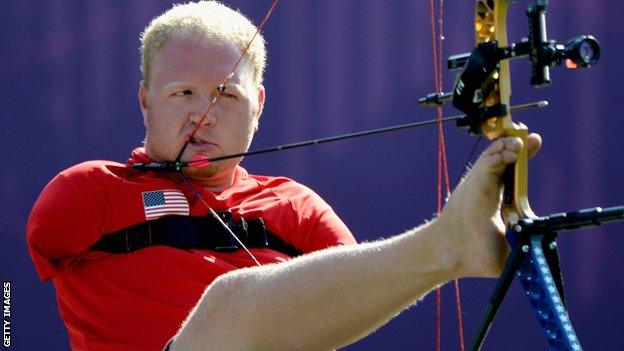
Archery is open to athletes with a physical disability and classification is broken up into two classes:
W1: Wheelchair users with impairment in all four limbs with either a clear loss of muscle strength, co-ordination or range of movement.
Open: This class is eligible for wheelchair users where their arms show normal function but the trunk and legs are strongly affected. Some athletes in this class may choose to compete standing but require some support because the impairment they have affects their balance.
ATHLETICS
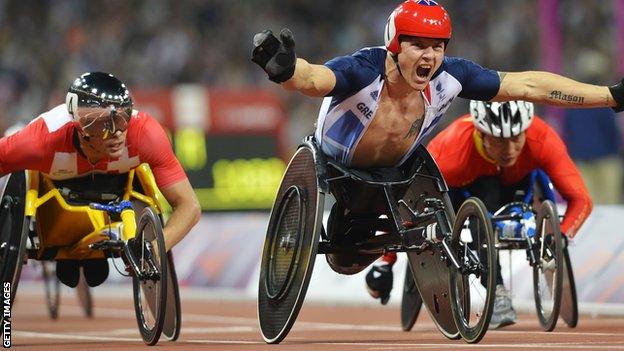
All impairment groups can compete in athletics but a system of letters and numbers is used to distinguish each class.
A letter F is for field athletes, T represents those who compete on the track, and the number shown refers to their impairment.
11-13: Track and field athletes who are visually impaired. Blind athletes compete in class 11, wear compulsory blindfolds and run with a guide runner. Athletes in class 12 are visually impaired but running with a guide is optional.
20: Track and field athletes who are intellectually impaired. Athletes in this class have difficulty with reaction time and memory recognition during an event. There are three events for men and women in the Rio programme - 1,500m, long jump and shot put- these particular events have been medically proven to have an impact on performance for T/F20 competitors.
31-38: Track and field athletes with cerebral palsy or other neurological conditions that affect muscle co-ordination and control. Athletes in classes 31-34 compete in a seated position (using a racing or throwing chair), while athletes in classes 35-38 compete standing.
40: Track and field athletes with short stature (also known medically as dwarfism).
42-47: Track and field amputees. In classes 42-44 the legs are affected and in class 45-47 the arms are affected. Athletes in these classes compete standing and do not use a wheelchair.
T51-54: Wheelchair track athletes. Athletes in class 51-52 are affected in both lower and upper limbs. T53 athletes have fully functioning arms but have no trunk function at all, while T54 athletes have partial trunk and leg functions.
F51-58: Wheelchair field athletes. Athletes in F51-54 classes have limited shoulder, arm and hand functions and no trunk or leg function, while F54 athletes have normal function in their arms and hands. In the F55-58 classes the trunk and leg function increases.
BOCCIA
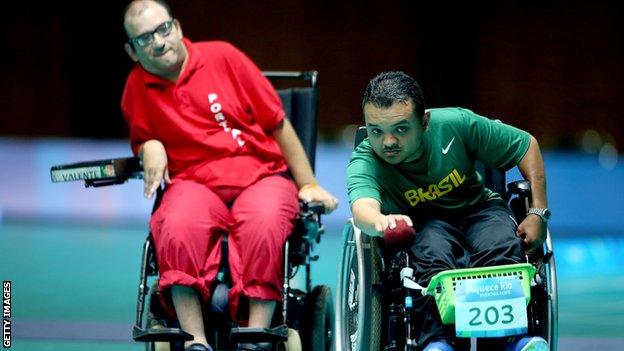
Boccia (a bowling game) is open to athletes with cerebral palsy and other severe physical disabilities (eg muscular dystrophy) who compete from a wheelchair, with classification split into four classes.
BC1: Players with cerebral palsy who are able to use their hands or feet to consistently propel a ball into play. BC1 athletes may have an aide on court to pass them their ball before each shot but do not use assistive devices.
BC2: Players with cerebral palsy who are able to use their hands to consistently propel a ball into play and have greater functional ability than a BC1 athlete.
BC3: Players with cerebral palsy or other impairments in all four limbs who are unable to throw or kick a ball into play. The athletes are permitted to use an assistive device such as a ramp to propel the ball into play and are supported by an assistant who adjusts the ramp on the instructions of the player.
BC4: Players who do not have cerebral palsy but have another impairment in all four limbs and have similar functional ability to BC2 athletes. Conditions such as muscular dystrophy, spina bifida and tetraplegia will fall under this classification.
CANOEING
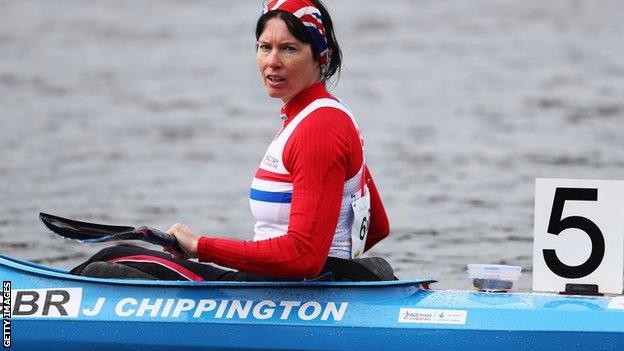
All athletes with physical impairments are eligible to compete in canoeing using a kayak with a double blade paddle. They are grouped into three sport classes.
KL1: Athletes in this sports class have no or very limited trunk and no leg function.
KL2: Athletes in this sports class have partial trunk and leg function; they are able to sit upright in the kayak. Along with this, they will have limited leg movement during paddling.
KL3: Athletes in this sports class have trunk and partial leg function and are usually able to use at least one prosthetic
CYCLING
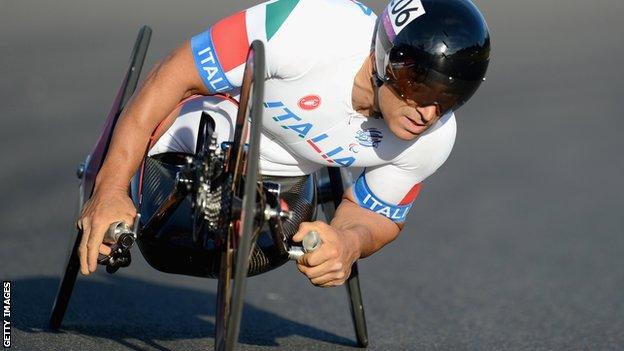
Cycling is open to amputees, "les autres" (athletes whose impairment does not fall under one of the other categories), athletes with cerebral palsy and visually impaired athletes, competing in individual road race and track events.
Athletes with physical impairments either compete on bicycles (road and track), handcycles or tricycles (road only).
B1-2 classes: Visually impaired athletes compete on tandem bikes with a sighted guide.
Handcycle sport classes H1-5: Cyclists in H1-4 compete in a reclined position. H1 athletes have no trunk or leg function and limited arm function while H3 athletes have no leg function but good trunk and arm function. H5 athletes sit on their knees and use their arms and trunk.
Tricycle T1-2: Races for athletes who are unable to ride a bicycle because of a condition affecting their balance and co-ordination. Athletes in the T1 class have more serious co-ordination problems then T2 athletes.
Bicycle C1-5: Cyclists may have a condition like cerebral palsy or have a leg or arm amputation. C1 athletes have the most severe limitation while C5 athletes meet the minimum impairment criteria. For example, an athlete with a double leg amputation would compete in the C3 class, while an athlete with a single leg amputation would compete a class higher in C4.
EQUESTRIAN
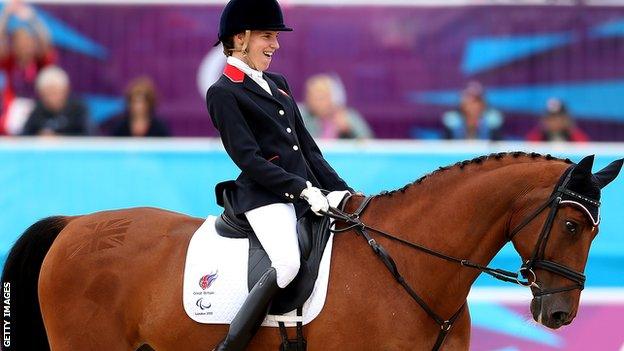
All impairment groups can take part in equestrian sport with Para-dressage the only event on the Paralympic programme.
Riders are divided into five grades.
Grade Ia: Severely disabled riders with impairments of all limbs and poor trunk control who usually use a wheelchair in daily life.
Grade Ib: Riders with either severely reduced trunk control and minimal upper limb conditions or moderate upper and lower limb and trunk conditions. Most use a wheelchair in daily life.
Grade II: Riders have a very limited ability in both lower limbs and a good trunk balance, or milder limitations in upper and lower limbs with reduced trunk control. Some use a wheelchair in daily life.
Grade III: Ambulant riders (those able to walk independently) who have impairments in both arms or have no arms, or moderate impairments of all four limbs. This category also includes blind riders and those with conditions such as dwarfism.
Grade IV: Ambulant athletes with either impaired vision or reduced motion or muscle strength or impaired arm or leg function.
FOOTBALL 5-A-SIDE
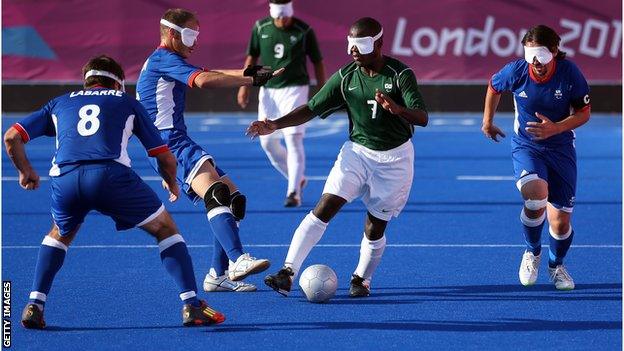
Five-a-side football is played by those with a visual impairment.
All players in the five-a-side game must wear eyeshades except the goalkeeper, who is sighted but cannot leave the area. There are no offside rules.
The football contains ball bearings to produce a noise when it moves.
FOOTBALL 7-A-SIDE
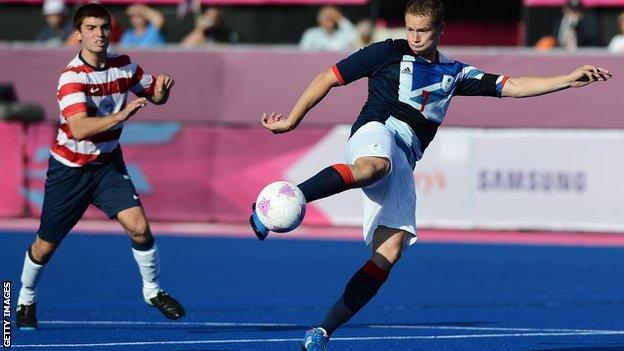
Seven-a-side football is played by athletes with cerebral palsy or a subsequent brain injury.
Players are classified into one of the following groups; the C5, C6, C7 or C8 divisions, decided by the player's level of limb control and co-ordination problems when running.
All classes are comprised of ambulant athletes. Those in class five are least physically able; those in class eight are minimally affected.
At least one C5 or C6 class athlete must be on the field at all times and a team is not allowed to have more than two C8 players on the field.
GOALBALL

Goalball is played by visually impaired athletes and a special rule means there is no need for classification.
Participants wear black-out masks to ensure everyone, whether blind or visually impaired, competes equally. The masks are checked during the game.
The ball has bells inside it to help to orientate the players and, as a result, the game is played in total silence.
JUDO
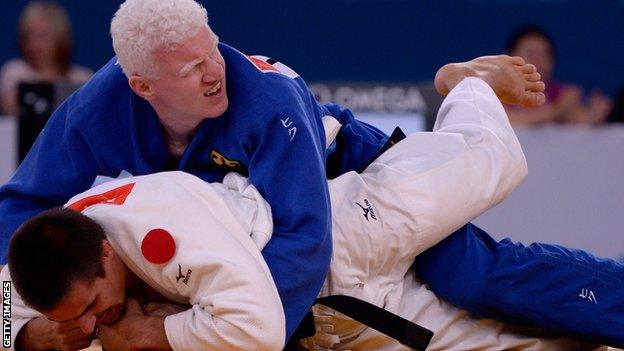
Judo is contested by visually impaired athletes only. There is no categorisation as competitors are divided by weight in the same way as able-bodied athletes.
The main difference is that athletes begin the bout "gripped up" (holding each other) rather than apart.
POWERLIFTING
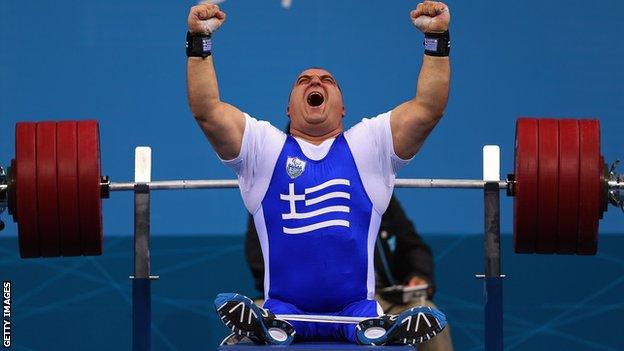
Powerlifting is open to all athletes with a physical disability and is classified by weight alone.
Powerlifters competing at the Paralympics have disabilities in their lower limbs or hips, including paralysis, cerebral palsy and lower limb amputation.
Both male and female competitors take part in 10 separate weight classes.
ROWING
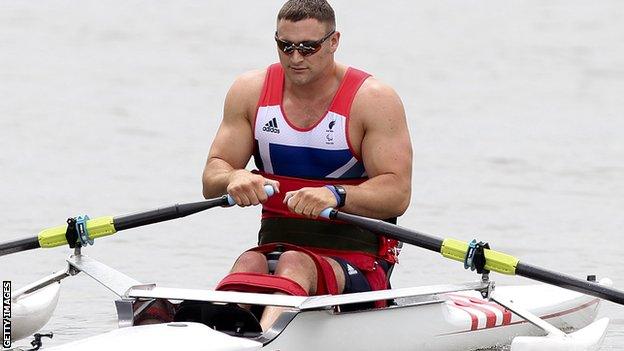
Rowing is divided into four classes made up of letters to identify which body parts athletes are able to use when rowing.
AS (arms and shoulders): Athletes have full movement in their arms and shoulders with limited or no leg function e.g. spinal cord injuries.
TA (trunk and arms): Athletes with a good level of trunk and arm movement. These athletes are not able to utilise a sliding seat when rowing.
LTA (legs, trunk and arms): Open to athletes with an impairment but who have movement in the legs, trunk and arms. This class can also include the visually impaired.
SAILING
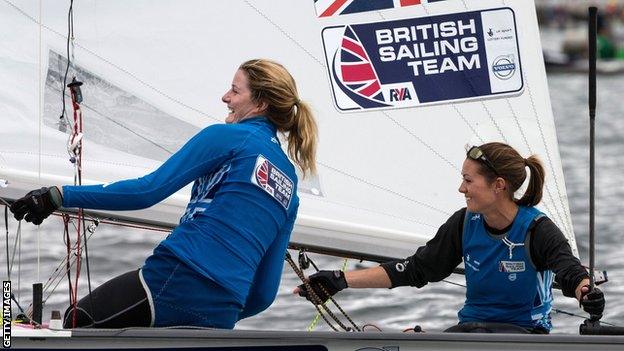
Sailing is a multi-impairment sport where athletes from the amputee, cerebral palsy, visually impaired, wheelchair and les autres groups can compete together.
There are three sailing classes: the Sonar, which is a mixed three-person crew, the Skud-18, a mixed two-person class, and the 2.4mR event, which is operated by a single person.
Competitors are ranked according to a points system from one to seven, where low points are given to severe conditions and high points for the moderately able competitors.
Each crew of three is allowed a maximum of 14 points between them.
In the Skud-18 category, one sailor has a more severe level of impairment (equivalent to a class one or two) while the other must have a minimum level of impairment that prevents them competing on equal terms with able-bodied sailors.
Single-handed sailors must have that same minimum level of impairment.
SHOOTING

Shooters are divided into wheelchair and standing groups.
These divisions are split into six sub-classes, each of which determines the type of mobility equipment the competitor is allowed to use.
SH1: For pistol and rifle competitors who do not require a shooting stand. Athletes in this class usually have an impairment in one limb. Athletes can choose to compete sitting or standing.
SH2: For rifle competitors who have an impairment in their arms and therefore require a shooting stand. Most competitors in this class compete in a wheelchair.
SITTING VOLLEYBALL
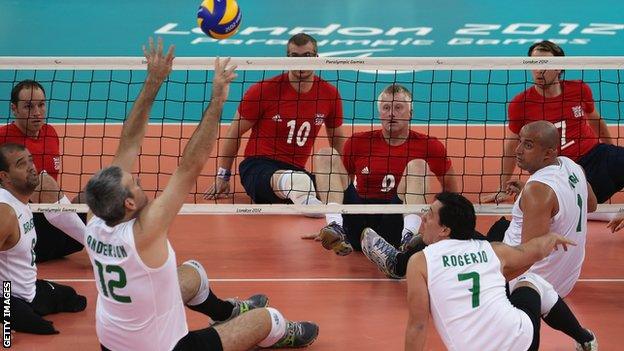
Sitting volleyball is contested by athletes with a physical impairment with the majority being amputees.
There are two classes called Minimally Disabled (MD) and Disabled (D) and a team may only have one MD player on the court while the other five players have to be classed as D.
Examples of a Minimally Disabled player include anterior cruciate ligament injuries and missing fingers.
SWIMMING
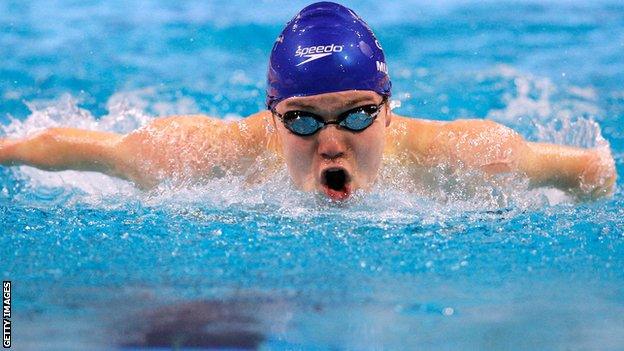
Swimming is the only sport that combines the conditions of limb loss, cerebral palsy (co-ordination and movement restrictions), spinal cord injury (weakness or paralysis involving any combination of the limbs) and other disabilities (such as dwarfism and major joint restriction conditions) across classes.
1-10: Allocated to swimmers with a physical impairment. The lower the number, the more severe the impairment.
11-13: Allocated to swimmers with a visual impairment.
14: Allocated to swimmers with an intellectual impairment.
The prefix S denotes the class for freestyle, backstroke and butterfly. SB denotes the class for breaststroke, and SM denotes the class for individual medley.
The prefix and class number provide a range of classifications, from swimmers with severe disability (S1, SB1, SM1) to those with minimal disability (S10, SB9, SM10).
In any one class, swimmers may start with a dive or already in the water. This is taken into account when classifying an athlete.
Swimmers may have a classification that varies according to their event - for example, it may change between breaststroke and backstroke, according to the effect of their movements on the event in question.
TABLE TENNIS
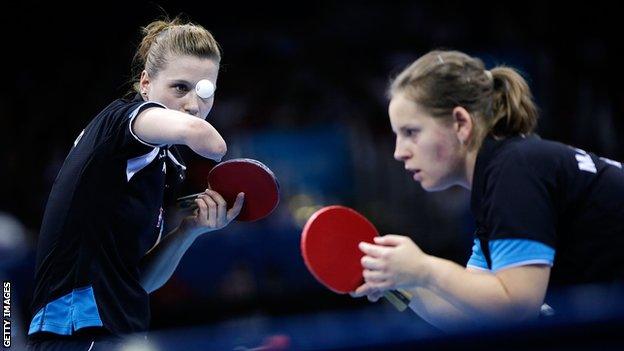
Table tennis is played by athletes with a physical or intellectual disability divided into 11 classes.
1-5: Athletes competing from a wheelchair, with class one the most severely impaired and class five the least impaired.
6-10: Ambulant athletes, with class six the most severely impaired and class 10 the least.
11: Athletes with an intellectual impairment.
TRIATHLON
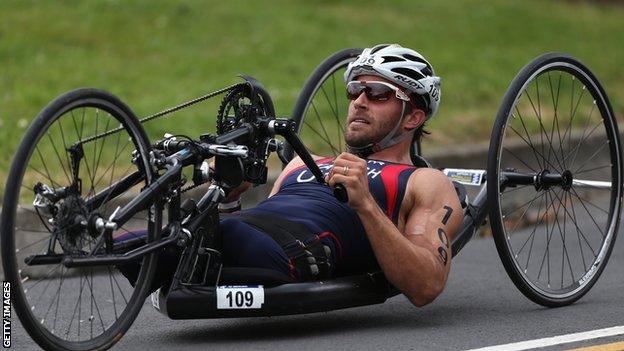
Triathlon was accepted onto the Paralympic programme for the 2016 Games in Rio and it consists of a 750m swim, a 20km cycle and a 5km race to the finish line.
The sport is divided into five classes for both men and women.
PT1: This class is for wheelchair users. They swim, cycle using a hand-bike and complete the 5km run in a racing wheelchair.
PT2-4: These classes are for ambulant athletes whose impairments include loss of muscle strength, range of movement and loss of limbs. They can cycle using approved adaptations and run with or without the use of prosthetics.
PT5: This class is for visually impaired athletes who have the option to ride a tandem cycle and run with a guide.
WHEELCHAIR BASKETBALL
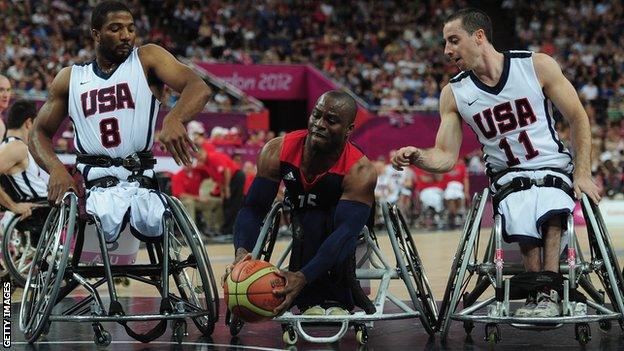
Basketball is open to wheelchair athletes, whose impairments may include paraplegia, lower limb amputation, cerebral palsy and polio.
Athletes are classified according to their physical ability to complete all tasks related to a basketball game.
All players are given a points rating between 1.0 and 4.5 - a 1.0 point player equates to the most severe impairment, 4.5 to the least.
Each team fields five players but the rating of each player must not exceed a total of 14 points at any time on court.
WHEELCHAIR FENCING
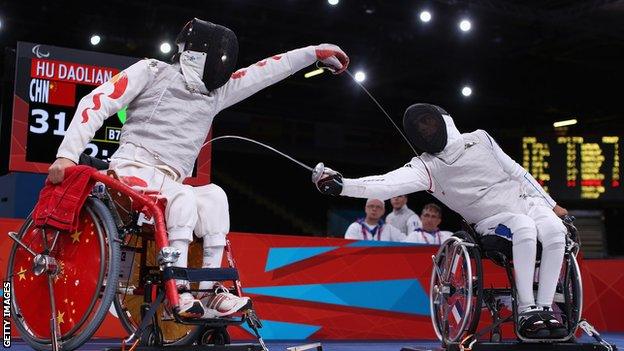
Fencing is open to wheelchair athletes, whose impairments may include spinal cord injuries, lower limb amputation and cerebral palsy and whose conditions prohibit them from competing against standing, able-bodied fencers.
Athletes competing in this event are split into two classes.
Category A: Athletes with good balance and recovery, and full trunk movement with a fully functioning fencing arm. Not all athletes in this class use a wheelchair in daily life.
Category B: Athletes with poor balance and recovery, but full use of one or both upper limbs. The fencing arm they use may be affected and usually support themselves with their non-fencing arm while in action.
WHEELCHAIR RUGBY

Wheelchair rugby athletes are classified using a points system, with the most severely impaired athletes being graded at 0.5 points, rising to 3.5 points for the more able.
Each team is comprised of four players and is allowed a maximum of eight points on court at any one time.
WHEELCHAIR TENNIS

Tennis is played from a wheelchair with two classes - open and quad (players in this class have impairments in three or more limbs).
In wheelchair tennis competitions, players are allowed two bounces of the ball, the first bounce being within the bounds of the court.
Players in the quad class have a severe impairment in their legs with some level of impairment in their playing arm. Most players in this class usually attach the racket to their hand using a strap.
The open class is for all other physically impaired athletes that use a wheelchair but some athletes in this class do not use a wheelchair in daily life.
- Published23 August 2016

- Published2 September 2016
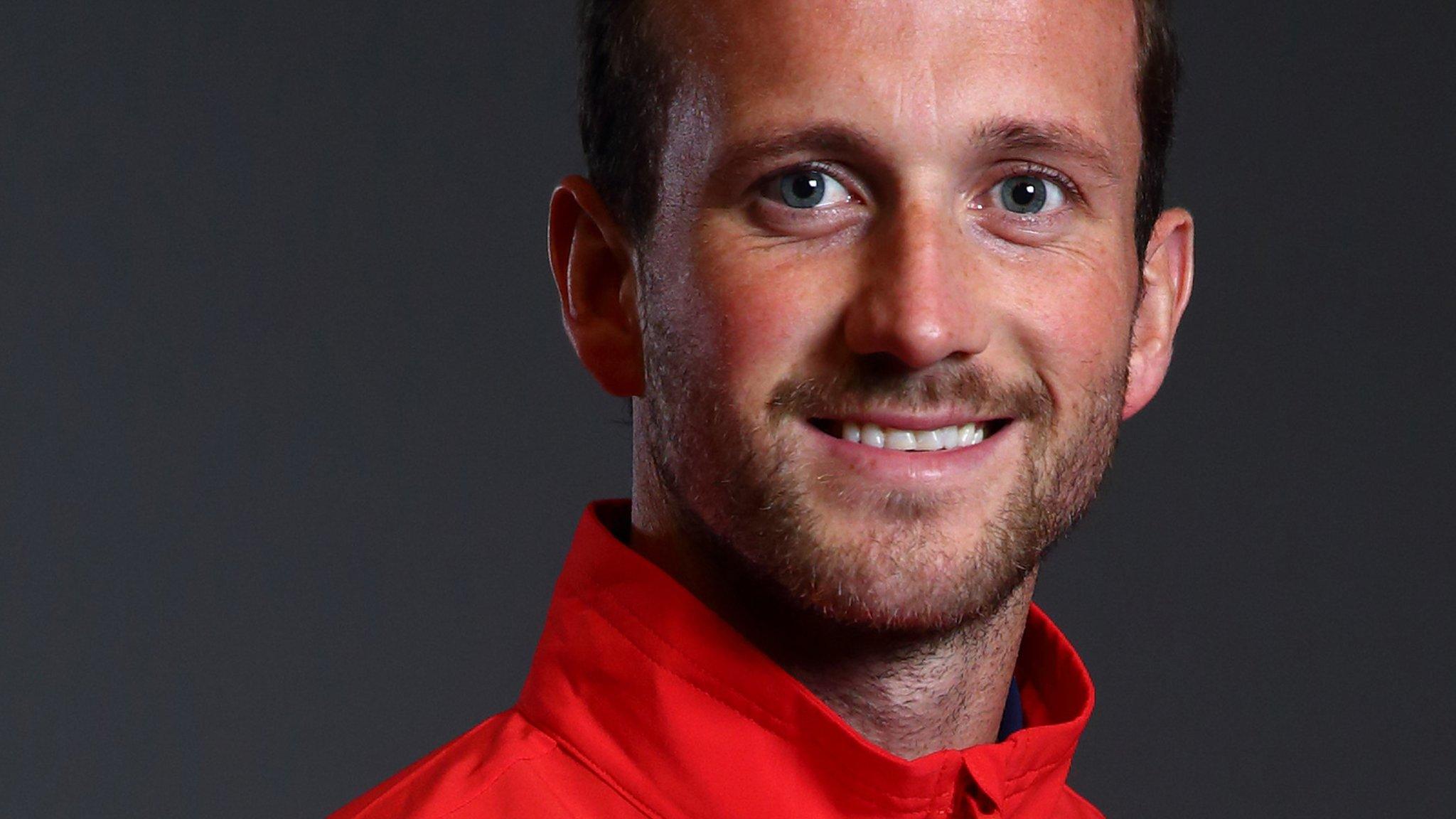
- Published24 August 2016
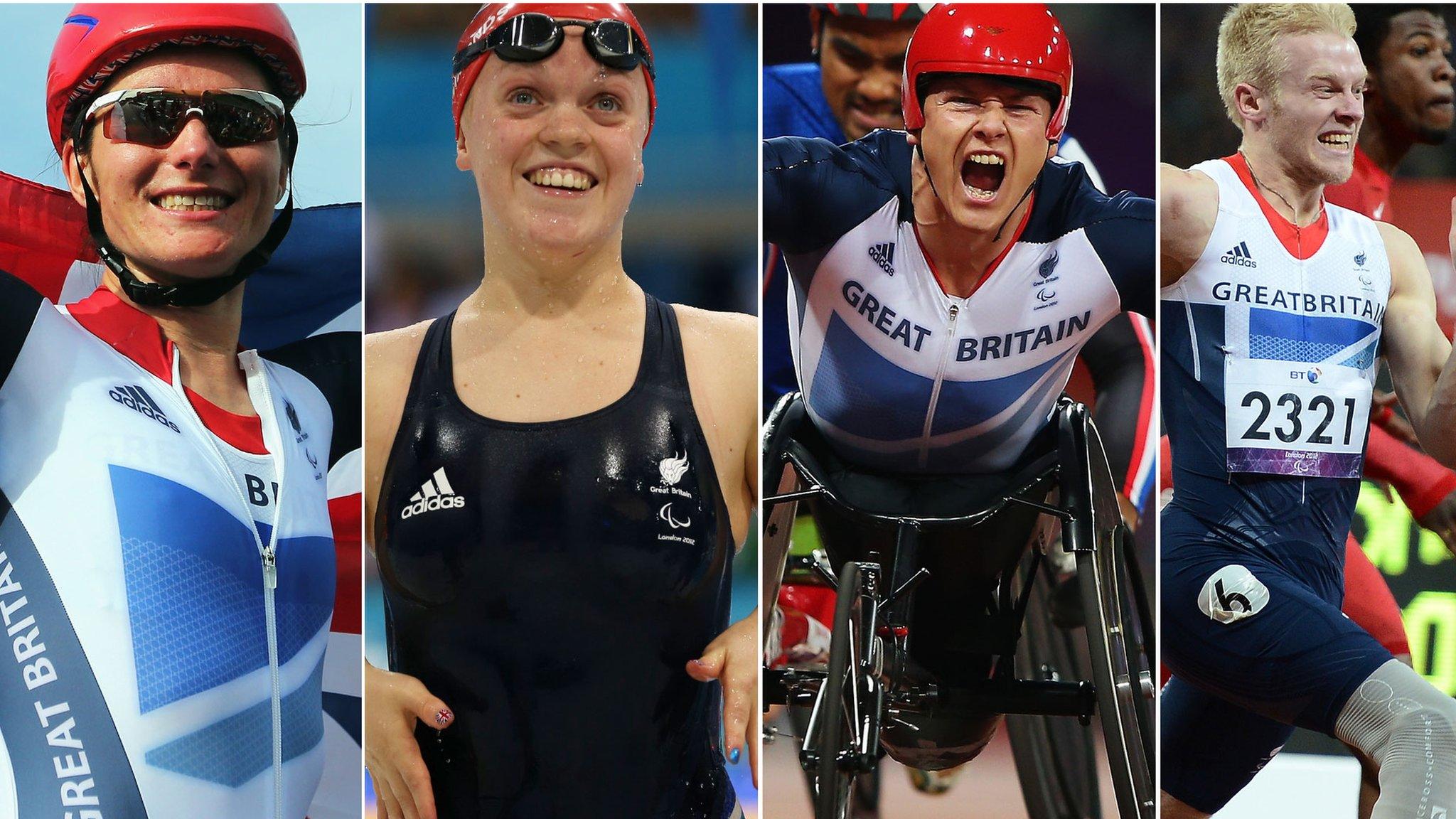
- Attribution
- Published30 August 2016
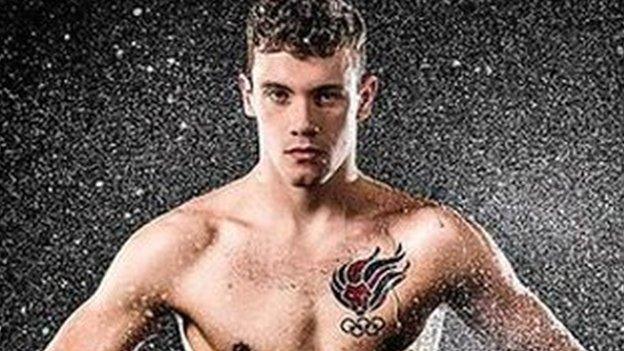
- Published5 September 2016
